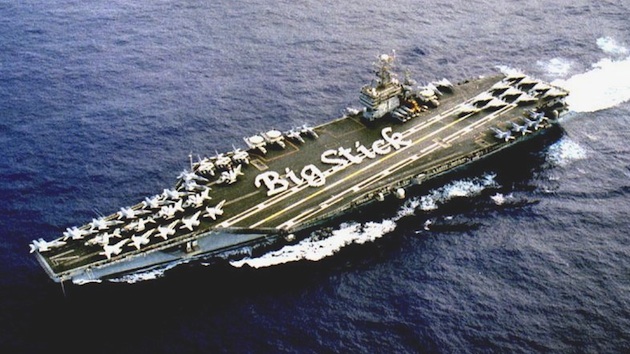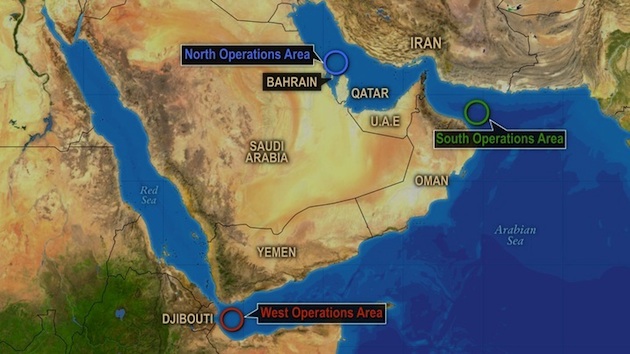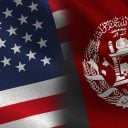

U.S. Navy officials say the aircraft carrier USS Theodore Roosevelt, depicted in this filed photo dated 1999, has joined the battle fleet off the waters off Yemen and is prepared to intercept any Iranian vessels carrying weapons to the Houthi rebels fighting in Yemen.
Iran’s deputy foreign minister said he was optimistic a ceasefire in Yemen would be announced later on Tuesday, a sign the regime may have blinked when faced with a threat of military force.
Pentagon officials confirmed late Monday that the USS Theodore Roosevelt had been ordered to join a battle fleet in the Persian Gulf with a mission to intercept shipments of Iranian weapons to the Shiite Houthi rebels fighting the U.S.-backed government of Yemen.
“This is really about sending a message,” an official said. “It is a message to our partners that we are in this and willing to support. It is a message to the Iranians that we’re watching.”
Now, a report from the Iranian Tasnim news agency indicates the regime in Tehran is looking for a way out of a quickly escalating situation.
“We are optimistic that in the coming hours, after many efforts, we will see a halt to military attacks in Yemen,” Hossein Amir Abdollahian was quoted as saying by Tasnim.
Iran has long sought to isolate the Kingdom of Saudi Arabia, their Sunni-dominated arch nemesis across the Gulf. However, control of both the West Operations Area (Bab el Mandeb) and South Operations Area (Hormuz) through proxy states or directly would not only achieve that goal, but also allow them to gain significant control over the Middle East oil supply and global oil markets.

The Strait of Bab el Mandeb (West Operations Area) and Strait of Hormuz (South Operations Area) sandwiches the currently embattled and disputed country of Yemen.
U.S. President Barack Obama spoke to Saudi King Salman on Friday and, according to the White House, simply agreed that a negotiated political solution was necessary to achieve lasting stability in Yemen. However, he gave the order to the USS Roosevelt just two days later on Sunday, bringing the number of U.S. warships in the Persian Gulf to at least 9.
Pentagon officials who spoke to PPD said that the USS Theodore Roosevelt will also track at least one Iranian naval convoy that was headed to the Gulf of Aden.
Saudi Arabia began leading a coalition of allied Arab countries in a bombing campaign against the Houthis in late March. The Shiite rebel militants, whose official slogan is “Death to Israel, Death to America,” seized control of the capital of Sanaa and forced the resignation of U.S.- and Saudi-backed former President Abed Rabbo Mansour Hadi.
READ ALSO — Why U.S. Increased Support For Saudi Coalition Fighting Iran Proxy In Yemen
It was a stunningly embarrassing development the White House struggled to explain, which came less than one year after President Obama cited the Arab world’s poorest country as the model for his administration’s plan “to degrade and ultimately destroy” the Islamic State (ISIS).
PPD reported in early April that the United States was expediting shipments of arms to the Saudi coalition, though Pentagon officials said U.S. involvement had been rather significant prior to the decision, including already-utilized rescue assets provided for downed Saudi pilots.
The USS Theodore Roosevelt adds a great deal of naval and air capability, as well as supportive firepower to the Persian Gulf battle fleet, which was already equipped with amphibious ships for landing troops.







